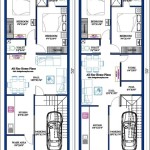Home Affordable Refinance Program (HARP): A Comprehensive Overview
The Home Affordable Refinance Program (HARP) was a government-sponsored program designed to assist homeowners who were current on their mortgage payments but had little to no equity in their homes, making it difficult to refinance through traditional methods. Often, these homeowners were underwater on their mortgages – meaning they owed more than the home was worth – due to declining property values in the wake of the 2008 financial crisis. HARP aimed to provide a pathway to lower interest rates and more manageable monthly payments, ultimately helping them avoid foreclosure and remain in their homes.
Established in 2009 by the Federal Housing Finance Agency (FHFA), HARP targeted homeowners whose mortgages were owned or guaranteed by Fannie Mae or Freddie Mac. This was a crucial requirement, as the program operated under the oversight of these government-sponsored enterprises (GSEs). The intention was to provide a targeted solution for eligible borrowers who met specific criteria and faced limited refinancing options through conventional means.
While the program officially expired on December 31, 2018, its impact on the housing market and the lives of countless homeowners remains significant. Understanding the mechanics of HARP, its eligibility requirements, and its benefits provides valuable insight into how government interventions can address economic challenges and support homeowners during times of financial hardship. Although no longer active, many homeowners benefitted from HARP, and its legacy continues to influence mortgage refinancing options and government housing policies.
Key Point 1: Eligibility Criteria for HARP Refinancing
To qualify for HARP, homeowners had to meet a specific set of criteria. These requirements were designed to ensure that the program targeted those who genuinely needed assistance and were likely to benefit from refinancing. The most important eligibility factors are detailed below:
Loan Ownership: The mortgage had to be owned or guaranteed by Fannie Mae or Freddie Mac. This was the fundamental requirement. Homeowners could determine if their loan was owned by these entities by using the Fannie Mae or Freddie Mac loan lookup tools available on their websites. These tools allowed borrowers to enter their information and quickly ascertain if their loan met this crucial prerequisite.
Origination Date: The loan had to have been originated on or before May 31, 2009. This date served as a cut-off point to ensure that the program focused on loans that were originated before the significant decline in property values during the housing crisis. Loans originated after this date were generally expected to have already reflected the lower market values.
Current on Mortgage Payments: The borrower had to be current on their mortgage payments with a good payment history. This meant no late payments within the past six months and no more than one late payment in the past 12 months. This requirement aimed to ensure that the program assisted responsible homeowners who were struggling despite their efforts to remain current on their obligations.
Loan-to-Value (LTV) Ratio: There was no maximum loan-to-value (LTV) ratio requirement under HARP. This was the defining characteristic of the program. Traditional refinancing options often require homeowners to have a certain amount of equity in their homes. HARP waived this requirement, allowing homeowners with little or no equity, or even negative equity, to refinance.
No Prior HARP Refinancing: The borrower could not have already refinanced their mortgage under HARP, unless they were refinancing from a shorter-term HARP loan into a longer-term HARP loan. This restriction prevented homeowners from repeatedly using the program to refinance their loans, focusing its benefits on those who had not yet received assistance.
Meeting these stringent eligibility requirements was paramount for participation in HARP. The program was precisely targeted, aiming to provide a financial lifeline to homeowners who were otherwise locked out of traditional refinancing opportunities due to factors beyond their control, such as the broader economic downturn and the decline in home values.
Key Point 2: Benefits of HARP Refinancing
HARP offered several significant benefits to eligible homeowners, primarily focused on improving their financial situation and reducing the risk of foreclosure. These advantages made the program a valuable resource for those struggling with underwater mortgages during a time of economic uncertainty.
Lower Interest Rates: One of the primary benefits of HARP was the potential to secure a lower interest rate on the mortgage. Even a small reduction in the interest rate could translate into substantial savings over the life of the loan. These lower rates could significantly reduce monthly payments, freeing up cash flow for other essential expenses.
Reduced Monthly Payments: By refinancing at a lower interest rate, homeowners typically experienced a reduction in their monthly mortgage payments. This decrease in monthly expenses could provide much-needed financial relief, particularly for families facing tight budgets. The lower payments could make it easier to manage other financial obligations and improve overall financial stability.
Improved Loan Terms: HARP also allowed homeowners to adjust the loan terms to better suit their financial situations. For example, homeowners could switch from an adjustable-rate mortgage (ARM) to a fixed-rate mortgage, providing more predictability and stability in their monthly payments. They could also potentially extend the loan term, further reducing monthly payments, although it's important to note that extending the term would result in paying more interest over the life of the loan.
No New Appraisal Required (in many cases): In many cases, HARP did not require a new appraisal. This was a significant advantage for homeowners with underwater mortgages, as a new appraisal could have confirmed the reduced value of their homes, making it even more difficult to qualify for refinancing. The waiver of the appraisal requirement streamlined the refinancing process and removed a significant hurdle for eligible borrowers.
Reduced Risk of Foreclosure: Perhaps the most significant benefit of HARP was its potential to reduce the risk of foreclosure. By lowering monthly payments and providing more stable loan terms, the program helped homeowners stay current on their mortgages and avoid the devastating consequences of foreclosure. This benefited not only the individual homeowners but also the broader community by stabilizing neighborhoods and preventing further strains on the housing market.
The benefits of HARP were multifaceted, addressing not only the immediate financial challenges faced by homeowners but also contributing to long-term financial stability and a more secure housing market. By providing access to more affordable and manageable mortgage terms, HARP played a crucial role in helping homeowners navigate the economic challenges of the time.
Key Point 3: The End of HARP and Alternative Options
The Home Affordable Refinance Program (HARP) officially expired on December 31, 2018. The FHFA determined that the program had largely achieved its goals of assisting homeowners with underwater mortgages and that market conditions had improved sufficiently to warrant its conclusion. While HARP is no longer available, homeowners with limited equity still have alternative refinancing options to explore.
Reasons for Termination: Several factors contributed to the decision to end HARP. First, the housing market had largely recovered from the depths of the financial crisis. Property values had rebounded in many areas, reducing the number of homeowners with underwater mortgages. Second, interest rates remained relatively low, making traditional refinancing options more accessible. Finally, the FHFA believed that the program had effectively served its purpose, and that alternative programs and market-based solutions could adequately address the remaining needs of homeowners with limited equity.
Alternative Refinancing Options: While HARP is no longer an option, homeowners with limited equity can still explore other refinancing opportunities. These include:
Fannie Mae and Freddie Mac Standard Refinance Programs: Fannie Mae and Freddie Mac continue to offer standard refinance programs that may be available to homeowners with some equity. These programs typically require a certain amount of equity, but the requirements may be less stringent than those of traditional lenders. Homeowners should check the current eligibility criteria and compare offers from multiple lenders.
FHA Refinance: The Federal Housing Administration (FHA) offers refinance options that may be suitable for homeowners with lower credit scores or limited equity. The FHA Streamline Refinance program, for example, can be used to refinance an existing FHA loan without requiring a new appraisal or credit check. However, FHA loans require mortgage insurance, which can add to the overall cost of the loan.
VA Refinance: The Department of Veterans Affairs (VA) offers refinance options for eligible veterans and active-duty service members. The VA Interest Rate Reduction Refinance Loan (IRRRL), also known as a VA Streamline Refinance, can be used to refinance an existing VA loan with minimal documentation and potentially no appraisal. VA loans also typically offer competitive interest rates and do not require a down payment.
USDA Refinance: The United States Department of Agriculture (USDA) offers refinance options for homeowners in eligible rural areas. The USDA Streamlined Assist Refinance program can be used to refinance an existing USDA loan with reduced documentation and potentially no appraisal. USDA loans are designed to promote homeownership in rural communities.
Working with a Mortgage Broker: Homeowners can also benefit from working with a mortgage broker. Mortgage brokers have access to a wide range of lenders and loan products, and they can help homeowners find the best refinancing option for their individual circumstances. They can also provide guidance on improving credit scores and preparing for the refinancing process.
While the expiration of HARP marked the end of a specific program, the need for affordable refinancing options for homeowners with limited equity remains. By exploring alternative programs and working with experienced mortgage professionals, homeowners can still find ways to improve their financial situations and achieve their homeownership goals.
In summary, HARP was a critical government initiative that provided meaningful assistance to homeowners struggling with underwater mortgages. While no longer available, its impact on the housing market and the lessons learned from its implementation continue to inform housing policy and mortgage lending practices. Homeowners facing refinancing challenges should carefully research available alternatives and seek professional guidance to navigate the complexities of the mortgage market.

What Is A Home Affordable Refinance Program Harp

President Mortgage In Michigan Home Affordable Refinance Mi Harp

What Is Harp And Do I Qualify For A Loan

Benefits Of Home Affordable Refinance Program Harp 2 0

Home Affordable Refinance Program Harp

Home Affordable Refinance Program Harp

What Is Harp 2 0 Refinance Program Who Eligible Mortgage Lender South Ina Cain Team

Can You Do A Harp Loan On An Investment Property

What Is Harp
Fannie Mae Du Refi Plus Program Bills Com








